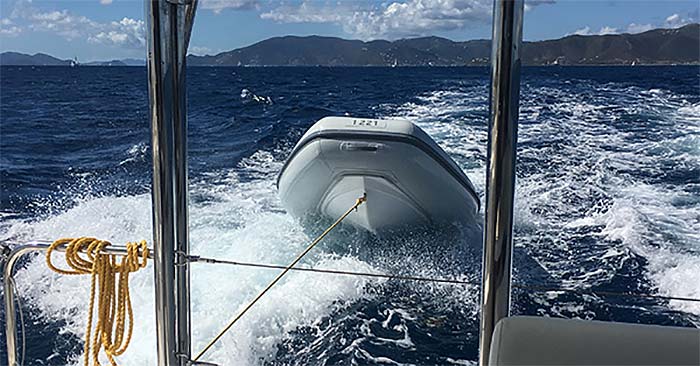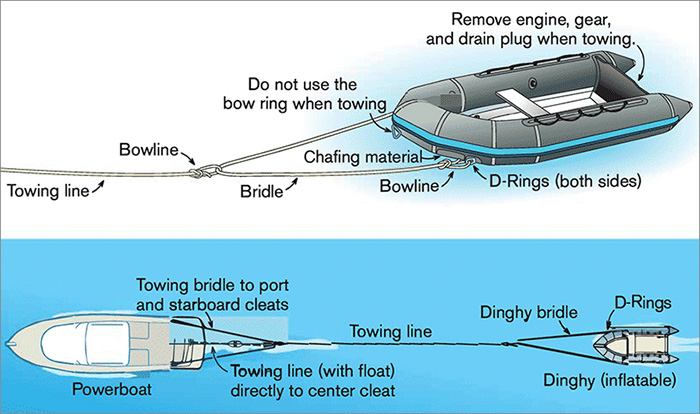Advertisement
Davits are divine, but sometimes you need to tow your tender. Follow our step-by-step guide to rigging a bridle for a safe and drama-free haul.

For cruisers, a dinghy is essential because it allows access to shore, can ferry groceries and supplies back to the mothership, and often serves as the kids, or grandkids "first command." But for all their attributes, dinghies can be a real pain when you cruise since they either need to be stowed on deck, deflated, or hung on davits. This is an easy decision when traveling some distance, but if you're just popping over to the next bay or cove, can't it just be towed?
For short hops, towing the tender is possible, but it isn't just about tying the two together and hitting the throttle. First, the tender must be empty. Remove paddles, rags, life jackets, any other equipment. Install any transom drain plug securely. Remove the outboard and shut off and remove the external fuel tank, if it has one. A 60-pound outboard adds too much drag and increases stress on the dinghy transom, towline, and attachment points. It will slow your progress significantly. If you can't remove the engine, tilt it up so the lower unit is out of the water, and tie the head with lines going to padeyes or handles on either side so the motor stays up without flopping for the duration of the tow.
Your towing bridle, hardware, and line are key. For very short distances with a hard-bottomed dinghy that tracks well and has a padeye on the stem (at least 6 inches below the gunwale so the bow rides high), you may be able to get away with attaching a single line directly between the tow and the big boat. For all other tows, especially with an inflatable, rig a bridle as follows.
The inflatable dinghy should have two stainless-steel D-rings on either side of the bow. Connect the ends of a line to each of the rings so you form a triangle that clears the bow by a few feet. Make sure to first pass this bridle through a bowline on the end of the towing line itself so the bridle can slide side-to-side and keep the weight better distributed between the rings. Better yet, use a small block to completely avoid the two lines chafing. (See illustration.) Do the same on the other end at the mothership, and attach the bridle to deck cleats. Slip a float on each end to keep the bridle out of the water, especially near the big boat's prop.
Towing a dinghy is not a "set it and forget it" procedure. Make sure to look back regularly to check on it, especially if the wind picks up or sea state deteriorates. If the dink ships water from waves or rain, it will increase drag. A 4-foot by 8-foot dinghy with only a few inches of water covering the bottom translates to hundreds of pounds of weight/drag/stress on dinghy D-rings, slow progress, and fuel inefficiency. It's also possible for a dinghy to flip over and submerge the motor or even break loose, so keep a watchful eye on your tow at all times.

Finally, consider your towing speed. Don't tow a dinghy so quickly that it becomes airborne. Never tow in questionable conditions. If you absolutely must tow, go slow. Sailboats have no other choice but to proceed slowly, but powerboats may be tempted to get a planing hull up to speed. This will put extra pressure on every piece of this puzzle. Finally, never tow a dinghy on long passages.
